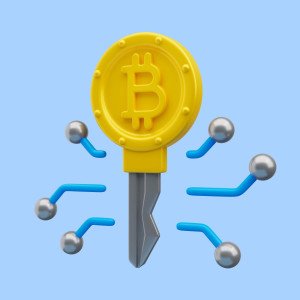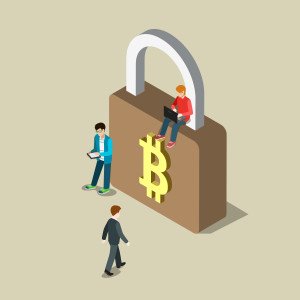Remember the one time you tried to save yourself from being embarrassed by a friend who claimed you owed them some cash? Yes, we all have that one friend. To avoid all sorts of drama, you instantly reach for your mobile device to make a transfer only to realise you have exceeded the transaction limit for that day.
Now you even feel more embarrassed having to explain the situation to your friend. Instances like this are common in our day-to-day activities, from making a purchase online to sending money to a loved one or trying to help a stranded friend who needs cash. This shows how much third-party platforms influence how we send and receive money.
A centralised body like the bank has authoritative power over how money goes in and out of a particular account. This is because we rely solely on them to verify and authenticate transactions for the purpose of establishing trust.
But blockchain is saying we don’t need them anymore. No intermediaries; you can make as many transactions as possible without the fear of cyberattacks, exceeding transaction limits, unnecessary charges or network glitches. The idea is to be able to maintain and manage the transaction ourselves instead of relying on someone else to do it.
It takes one person to go corrupt in any third-party network, and the entire ecosystem becomes chaotic.
What is blockchain about?
And how does it replace third-party platforms?
Let’s dive right in!
Forget about the technical jargon of what you think you know about Blockchain. Just like explaining to a five-year-old, this post will simplify the necessary foundational knowledge of what Blockchain entails.
The concept of Blockchain
Unless you live under the rock, you must have heard of Bitcoin. It’s a mainstream buzzword in the cryptocurrency space. Unlike your fiat money, e.g. a $5 bill, Bitcoin is digital or virtual money that can be transferred from one individual account to another without revealing anyone’s identity. Let’s say we have ten individuals who have agreed to have no reason to use the bank. Upon mutual agreement, these individuals decide to have each other’s account details, known as the public key.

Let’s call three of the ten individuals May, Nay and Day. Each individual has a page as a block where they each register any transaction within the network. May decides to send Nay 2BTC and announce it to everyone on the network to take note.
Immediately, everyone checks the transaction’s validity by ensuring May has enough balance to be sent. Everyone notes this on their page(block) when this is confirmed. The same procedure applies to subsequent transactions. When a page is filled, it is tucked into a folder called the chain. The page is the (block), and the folder being the (chain of blocks) is what we refer to as BLOCKCHAIN.
But before a page can be put into a folder, it has to be sealed(mined) with a unique key( hash function) that everyone on the network agrees upon.
How does it replace third-party platforms?
If you ask five people why they prefer third parties like banks to be in control of their funds, three will probably say, “They trust the bank because it is safe and secure”, which is unfortunately not affirmative.

In the case of blockchain, sealing the page makes everyone trust that the content on the page can never be altered or tampered with. A complex process calculates the sealing number through a machine called the ‘Hash Function’. Unlike the usual mathematical functions, this procedure requires feeding the machine thousands of numeric values to arrive at the required output. Anyone who successfully calculates the correct sealing number that everyone agrees with gets rewarded with a free BTC. The page is then secured with a seal and finally tucked in a folder. That is what adding a block to a chain of previous blocks called a folder looks like.
A wrap
Blockchain is a decentralised network that allows a block of transactions to be arranged, recorded and connected without alteration. And if you are wondering what makes the system vulnerable, the truth is one dishonest guy cannot beat the system. Still, if nine of the ten individuals decide to be dishonest with the transactions they make on the network, the blockchain will crumble. This is a rare situation because blockchain is built on the premise that most of the network that follows the longest chain is always honest.
Understanding the basis of Blockchain means you are aware of the challenges and benefits surrounding it. These give you first-hand insight when new trends come into play. You are able to navigate every new process like an expert because you have a background.
Let’s hear from you in the comments. Did you get a simple understanding of Blockchain?
You can also watch this video


